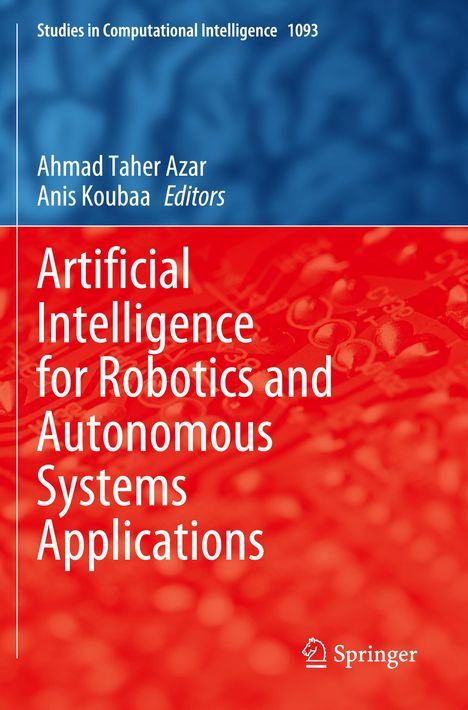Artificial Intelligence for Robotics and Autonomous Systems Applications, Kartoniert / Broschiert
Artificial Intelligence for Robotics and Autonomous Systems Applications
Buch
lieferbar innerhalb 2-3 Wochen
(soweit verfügbar beim Lieferanten)
(soweit verfügbar beim Lieferanten)
Aktueller Preis: EUR 149,34
- Herausgeber:
- Anis Koubaa, Ahmad Taher Azar
- Verlag:
- Springer International Publishing, 05/2024
- Einband:
- Kartoniert / Broschiert, Paperback
- Sprache:
- Englisch
- ISBN-13:
- 9783031287176
- Artikelnummer:
- 11869570
- Umfang:
- 496 Seiten
- Nummer der Auflage:
- 2023
- Ausgabe:
- 2023
- Gewicht:
- 744 g
- Maße:
- 235 x 155 mm
- Stärke:
- 27 mm
- Erscheinungstermin:
- 17.5.2024
- Hinweis
-
Achtung: Artikel ist nicht in deutscher Sprache!
Weitere Ausgaben von Artificial Intelligence for Robotics and Autonomous Systems Applications |
Preis |
|---|
Klappentext
This book addresses many applications of artificial intelligence in robotics, namely AI using visual and motional input. Robotic technology has made significant contributions to daily living, industrial uses, and medicinal applications. Machine learning, in particular, is critical for intelligent robots or unmanned / autonomous systems such as UAVs, UGVs, UUVs, cooperative robots, and so on. Humans are distinguished from animals by capacities such as receiving visual information, adjusting to uncertain circumstances, and making decisions to take action in a complex system. Significant progress has been made in robotics toward human-like intelligence; yet, there are still numerous unresolved issues. Deep learning, reinforcement learning, real-time learning, swarm intelligence, and other developing approaches such as tiny-ML have been developed in recent decades and used in robotics.Artificial intelligence is being integrated into robots in order to develop advanced robotics capable of performing multiple tasks and learning new things with a better perception of the environment, allowing robots to perform critical tasks with human-like vision to detect or recognize various objects. Intelligent robots have been successfully constructed using machine learning and deep learning AI technology. Robotics performance is improving as higher quality, and more precise machine learning processes are used to train computer vision models to recognize different things and carry out operations correctly with the desired outcome.
We believe that the increasing demands and challenges offered by real-world robotic applications encourage academic research in both artificial intelligence and robotics. The goal of this book is to bring together scientists, specialists, and engineers from around the world to present and share their most recent research findings and new ideas on artificial intelligence in robotics.

Artificial Intelligence for Robotics and Autonomous Systems Applications
Aktueller Preis: EUR 149,34

